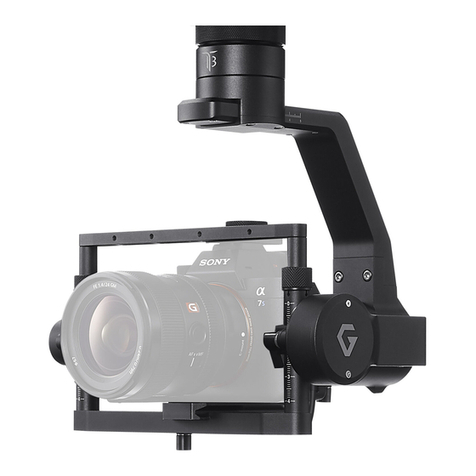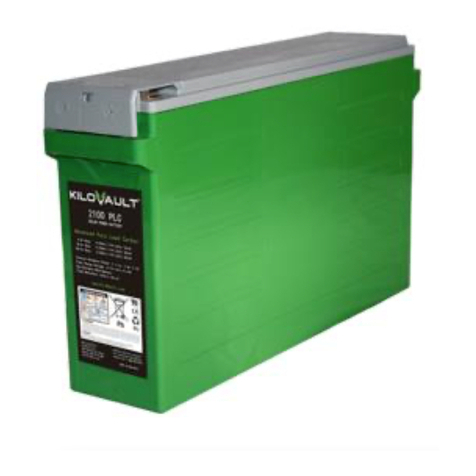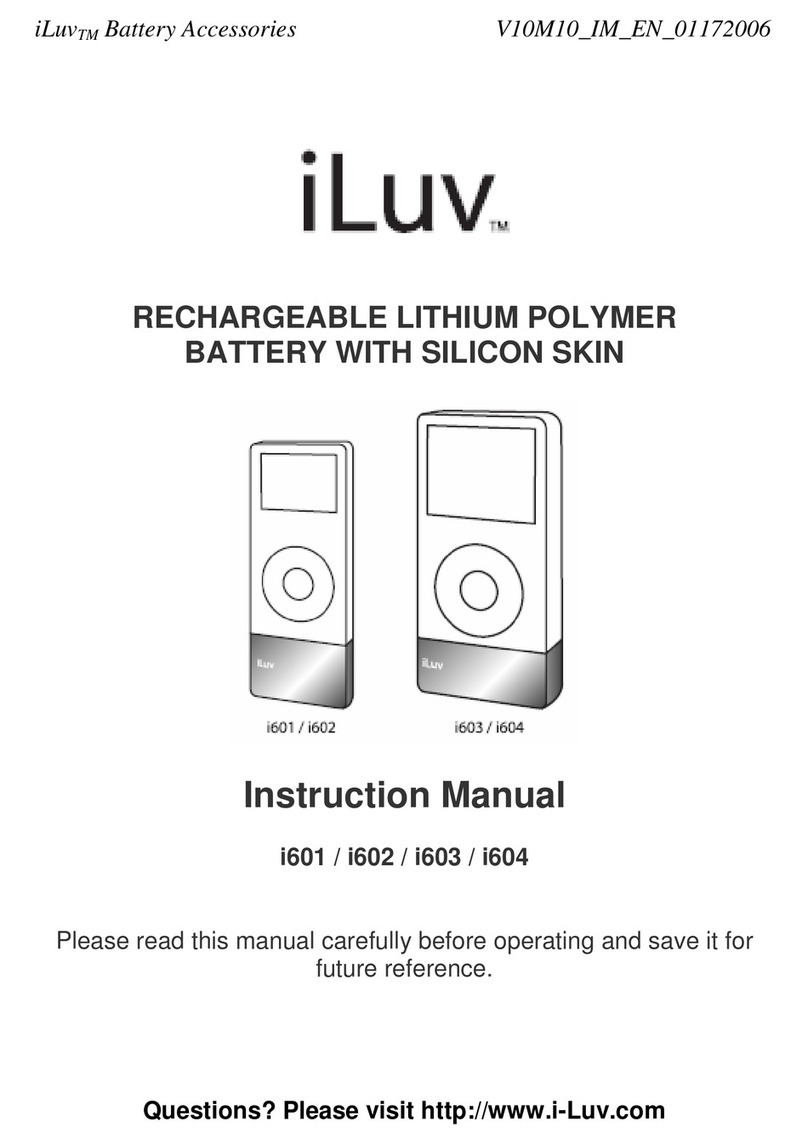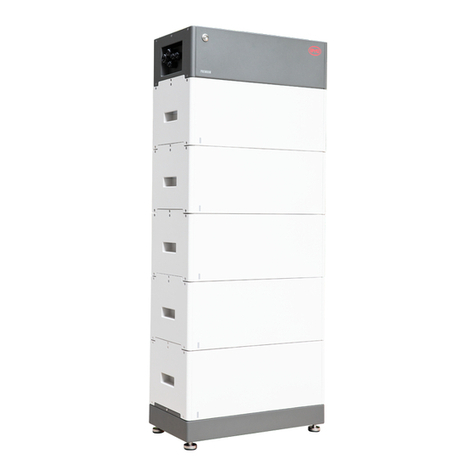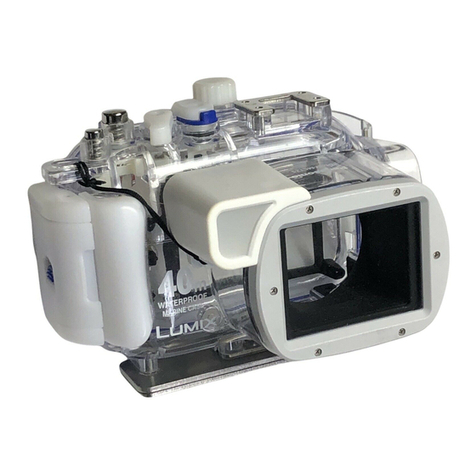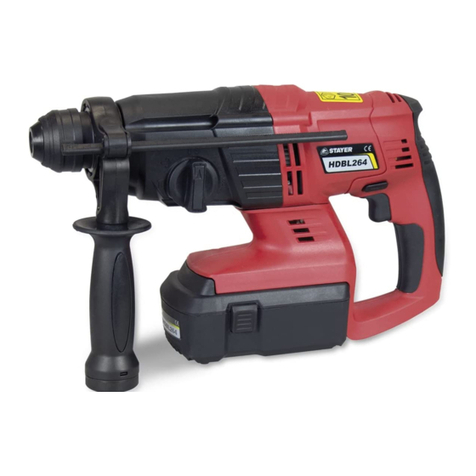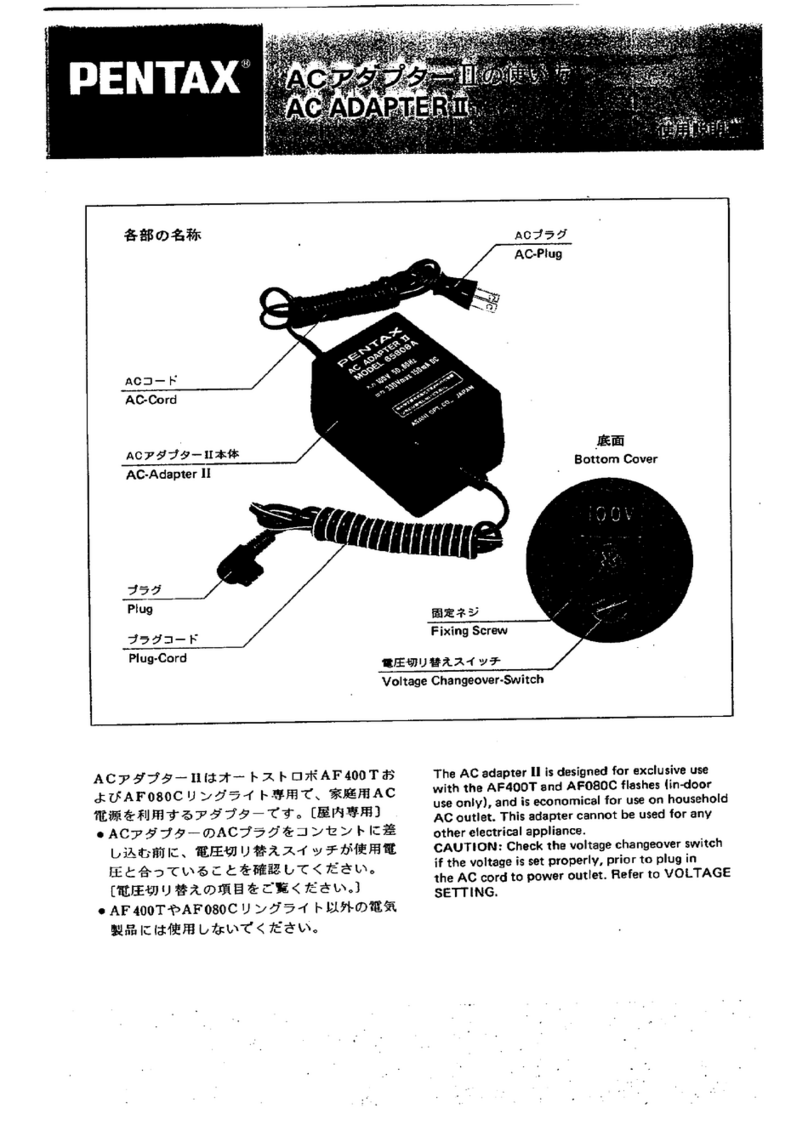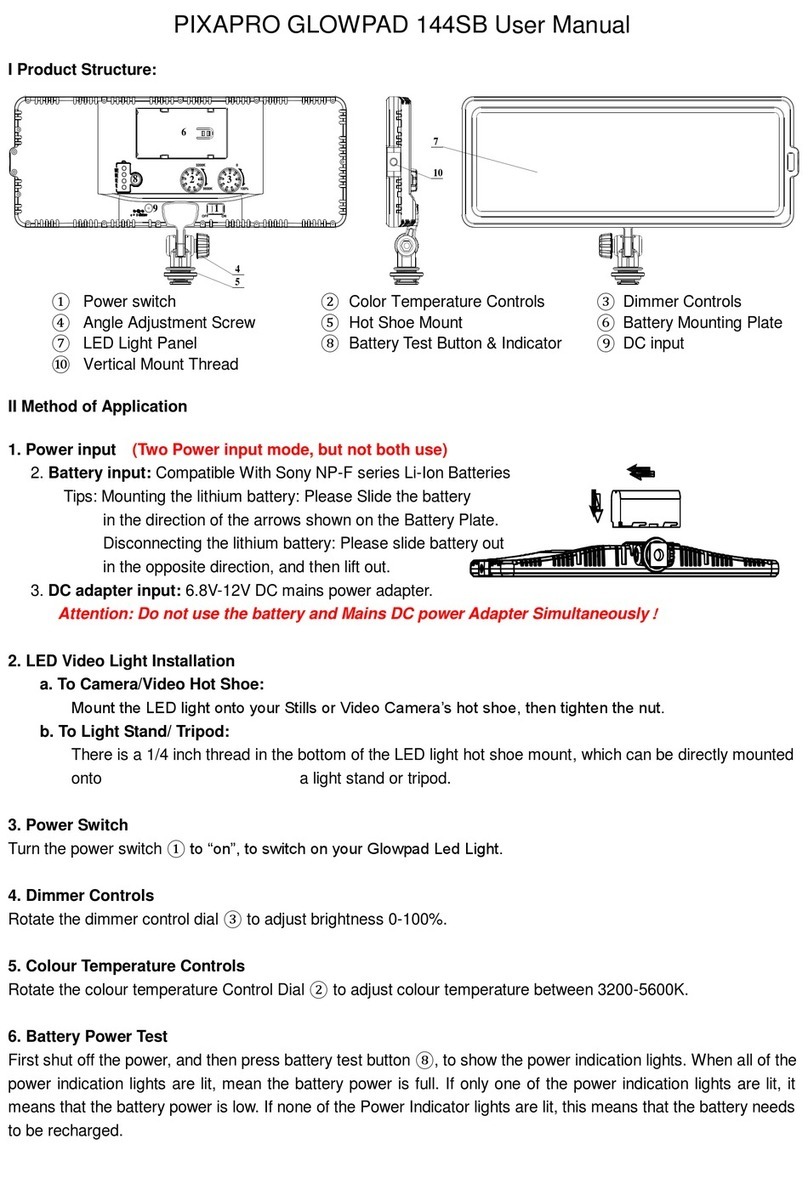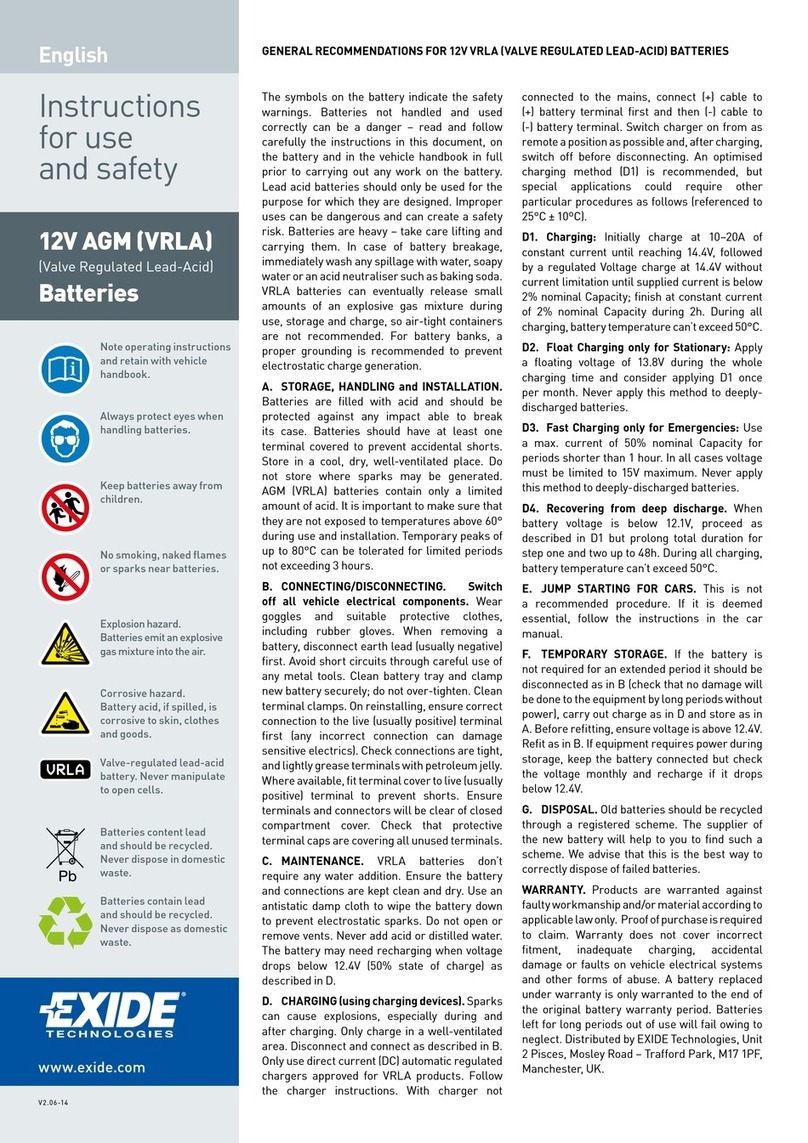MERAWEX MXB User manual

VAT No.: PL6310000440
Raiffeisen Bank Polska SA O/Gliwice, Poland, 44-100 Gliwice, Dolnych Wałów 7
Account No. PL62 1750 1237 0000 0000 0319 0676, Swift RCBWPLPW
VAT No.: PL6310000440
Raiffeisen Bank Polska SA O/Gliwice, Poland, 44-100 Gliwice, Dolnych Wałów 7
Account No. PL62 1750 1237 0000 0000 0319 0676, Swift RCBWPLPW
Power supplies •Electronics
Development •Production •Contract manufacturing
Machining services fax +48 32 23 99 409
merawex@merawex.com.pl
MERAWEX Sp. z o.o.
44-122 Gliwice, Toruńska 8, Poland phone +48 32 23 99 400
www.merawex.com.pl
VAT No. PL6310000440 Reg. No. KRS 0000058433, court: Sąd Rejonowy in Gliwice, X Wydz. Gosp. KRS Equity: 1,150,000 PLN
Power supplies •Electronics
Development •Production •Contract manufacturing
Machining services fax +48 32 23 99 409
merawex@merawex.com.pl
MERAWEX Sp. z o.o.
44-122 Gliwice, Toruńska 8, Poland phone +48 32 23 99 400
www.merawex.com.pl
VAT No. PL6310000440 Reg. No. KRS 0000058433, court: Sąd Rejonowy in Gliwice, X Wydz. Gosp. KRS Equity: 1,150,000 PLN
MXB lead-acid batteries
Operating Instructions
1. General information
MXB batteries are manufactured in the VRLA technology (Valve Regulated Lead Acid) with one-way
valves and electrolyte contained in the glass mat of the separator - AGM (Absorbent Glass Mat). It
makes the maintenance operation easier and allows for their use in rooms with natural gravity
ventilation.
Meeting the procedures included in this Operating Instructions will allow for long and safe use of the
product. The MXB batteries meet all the requirements of the EN 60896-21: 2007 and
EN 60896-22:2007 standards for lead-acid batteries.
The optimum ambient temperature for MXB batteries is + 5°C ÷ + 35°C.
2. Health and Safety recommendations
An installer should have adequate training, tools and protective equipment such as protective glasses
and clothing, fire extinguishers. Particular care must be taken to comply with the warning symbols
and to avoid all non-insulated parts of the system to avoid the risk of burning with current.
In the case of overcharging and after the safety valves have been activated, the hydrogen released
from batteries creates explosive atmosphere with the oxygen contained in the air. Therefore, it is
important to use good ventilation, avoid open flames and often discharge static electricity from your
clothing by touching it against a grounded element.
3. Storage
Batteries should be stored in a dry and cool place away from sources of fire, heat and sunlight. Any
elevated temperature causes a battery to self-discharge, thereby reducing its service life and
deterioration of its parameters. The storing place should be clean and have properly functioning
natural gravity ventilation. Do not store batteries in damp places.
The storage temperature limit is between -15°C to + 50°C and the recommended one is -5°C to +
40°C.
Storage time affects self-discharge of the battery, so after that time, you should perform refresh
charging of the parameters listed in the table below.
Regardless of the time criterion, a voltage criterion applies - if the voltage drops below 2.1V/cell,
which corresponds to capacity drop of up to 60% of the nominal capacity, the refresh charging
should be applied.
Storage
temperature
Storage time
Parametry ładowania odświeżającego
< 30°C
6 months
- charging with voltage limitation to 2.36V/cell at temperature of
25°C
- charging with current limitation 0.1*C
- temperature compensation factor: - 3mV/°C /cell
- time of refresh charging - 10 hours
> 30°C
3 months

MERAWEX Sp. z o.o.
44-122 Gliwice, Toruńska 8, Poland
Page 2/5
MERAWEX
MERAWEX
4. Installation of batteries
Batteries should be installed by trained persons, authorized to install them. Before starting, please,
check whether the batteries and their connectors are not damaged mechanically. Please, leave 10-20
mm space between batteries to ensure their adequate ventilation. Do not place batteries in sealed
enclosures (without the possibility of ventilation) to avoid creating explosive atmosphere. Use
anticorrosion agents (e.g. technical petroleum jelly) on battery terminals. Tighten the screws with a
torque wrench - torque according to the table below.
It is recommended to install the batteries with clamps up.
It is not advisable to install the batteries in reverse position (clamps down), as charging may result in
leakage of the electrolyte if the control valves are tripped.
Screw
Tightening torque
M5
2.0~3.0N*m
M6
3.9~5.4 N*m
M8
11~14.7N*m
5. Charging
General
This part of the Operating Instructions includes the most frequent ways of charging and their
parameters:
bulk charging,
charging at floating mode voltage (conservation charging after batteries are fully charged),
The other ways of charging have been described in other, corresponding parts of the Operating
instructions.
It refers to:
refresh charging (part 3),
equalizing charging (part 6),
charging at cycle mode (part 7),
return charging (part 8).
Note 1.: Deep discharge causes the plates to sulphate and damage in a form of irreversible loss of
part of the capacity or even destruction of the battery. The battery should be charged as soon as
possible - ideally according to the criteria of the equalizing charging described below or if time
permits the return recharging.
Note 2.: Leaving the battery in a state of deep or full discharge at negative temperatures can freeze
the electrolyte, which can result in cracking of the enclosure.
Temperature charging range
Charging can be realized within the range of 0÷40°C (exceptionally within the range of 0÷50°C).
Attention: Increasing the charging temperature (generally operation temperature) of a battery by
every 10°C above 25°C results in decreasing the battery lifetime twice.
For this reason, it is necessary to avoid operating batteries at elevated temperatures, and use them
in such the temperatures only occasionally.

MERAWEX Sp. z o.o.
44-122 Gliwice, Toruńska 8, Poland
Page 3/5
MERAWEX
MERAWEX
Range of charging voltage
Charging should take place with the thermal compensation of the voltage across the full temperature
range. Regardless of temperature, the maximum voltage during charging should not exceed
2.4V/cell.
The minimum battery charging voltage in each case should not drop below 2.2V/cell regardless of
temperature.
Range of charging current
For the MXB batteries, the maximum charging current is 0.25*C (rated capacity of the battery). High
charging current of the batteries, especially if accompanied by elevated temperature, can lead to
"thermal overload" which results in overcharging, overheating and deformation of the battery case.
Note: For the MXB batteries, the recommended charging current is 0.1*C.
Variable components of voltages and charging currents
Excessive variable components of voltages and charging currents can cause damage and reduce
battery life. Consequently, the variable component of the charging current should be limited to a
maximum of 0.05*C and the voltage variable component in the current range of 5...100% at resistive
load (this applies to a power supply without a battery connected) should be limited to 1% of the
rated voltage of the battery.
Recommended parameters of bulk charging:
- maximum charging current limited to 0.1*C
- bulk charging voltage: 2.36V/cell at 25°C,
- voltage temperature compensation factor: - 3mV/°C/cell,
- bulk charging should be interrupted when, after reaching the voltage indicated above, the battery
current falls below 25% of the maximum charging current or the charging time exceeds 10 hours.
The second case indicates a battery failure. It is advisable to discharge the battery then and
recharge it. If after 3 such the cycles, the battery is not fully recovered, please, replace the
damaged battery with a new one.
Recommended charging parameters at floating mode voltage:
- maximum charging current limited to 0.1*C,
- floating mode voltage: 2.28V/cell at 25°C ,
- temperature compensation factor: - 3mV/°C/cell,
Charging the MXB batteries at the floating mode voltage should be considered terminated if the
current falls below 0.01*C (10mA/1Ah). It is possible to maintain the floating mode voltage further.
In this case, we are dealing with conservation charging, which compensates for the loss of battery
charge due to self-discharge. When operating in such the state for a long time, the battery charging
current generally drops to about 5mA/1Ah.
6. Equalizing charging
The equalizing charging should be used for batteries in serial connection, operating for long time in
the floating mode. Not less than once a year and no more than once every 3 months.
Recommended parameters of equalizing charging:
- charging current limited to 0.1*C,
- equalizing charging voltage 2.36V/cell at 25°C,
- voltage temperature compensation factor: - 3mV/°C/cell,
- maximum time of equalizing charging, after which you need to go into the floating mode, is 10h.

MERAWEX Sp. z o.o.
44-122 Gliwice, Toruńska 8, Poland
Page 4/5
MERAWEX
MERAWEX
7. Cycle operation
If the battery is the primary power source, its operation is called the cycle operation, during which
the cycles of discharging / charging are repeated.
Recommended charging parameters at the cycle operation:
- charging current limited to 0.1 ÷ 0.25*C,
- charging voltage at the cycle operation: 2.40 ÷ 2.50V/cell at 25°C ,
- temperature compensation factor: - 5mV/°C/cell.
8. Discharging
The VRLA batteries are sensitive to low discharge voltage. Too deep discharge causes the battery
panels to sulphate and this translates into the reduced service life, reduced capacity and thus
reduced energy storage capacity.
Discharge can take place in the temperature range of -20 ÷ + 55 ° C.
The final discharge voltage should be limited according to the discharge time associated with the
discharge current according to the table below.
Final discharge voltage
(shut-down voltage)
Discharge time
1.60V/cell
below 30min.
1.65V/cell
from 30min. to 1h
1.70V/cell
from 3 to 5h
1.75V/cell
for 8h
1.80V/cell
from 10 to 20h
After reaching the final discharge voltage of the battery, please, stop the discharging process and
resume charging in a short time according to the parameters listed below.
Note: The parameters listed below do not apply to charging in the cycle mode.
Recommended parameters of return charging after discharging to final voltage:
- charging current limited to 0.1*C
- charging voltage 2.36V/cell at 25°C,
- voltage temperature compensation factor: -3mV/°C /cell,
- maximum time of return charging, after which you need to go into the floating mode, is 10h,
- recommended total time of return charging –up to 72h, the minimum time is 24h.
9. Maintenance
The VRLA batteries do not require periodic refilling of the distilled water. The surface of the battery
must be dry, clean and free from dust. The battery case, throughout its life, should be cleaned with a
cotton cloth dampened with water without detergent. Avoid contact with the terminals. It is not
allowed to clean the batteries with such the substances as petrol or solvent.

MERAWEX Sp. z o.o.
44-122 Gliwice, Toruńska 8, Poland
Page 5/5
MERAWEX
MERAWEX
10. Battery checks
In order to prolong the life of the batteries, you should check them periodically during their
operation. It is recommended to perform a check of the battery installation at least once a year. It is
recommended to run a book of operation, start and check protocols, in which there will be recorded:
measured values during installation and checks, power outages, and other notes observed during the
battery operation. All records and protocols made during start, operation and check should be
submitted in the event of a possible warranty claim.
Scope of actions when starting installation –according to the start protocol:
Visual inspection of the batteries, whether they do not have any visible mechanical damage
caused during transport,
Checking correctness and reliability of cable connections,
Setting charging parameters according to requirements (Technical Data Sheet, Point 5. of
Operating Instructions –Charging),
Measurement of voltages of individual batteries in the battery during floating mode (voltage,
charging on individual batteries should be within the limits described in the Operating
Instructions - Point 5. Charging, charging parameters),
Battery operation test,
Voltage measurement on individual batteries during battery operation,
Measurement of the voltage and current of the conservation charge of each serial branch and
comparison with the recommended values,
Resistance measurement of battery earthing insulation.
Sample scope of activities during the annual check:
Checking if the battery is free from damage, leaks and bulges and that it is not dirty,
Checking battery terminals for corrosion. If necessary, cover them with silicone grease or
technical vaseline, then tighten to the appropriate torque so that they are not loose.
Checking correctness and reliability of cable connections,
Battery operation test (discharging),
Measurement of the voltage and current of the conservation charging of each serial branch and
comparison with the recommended values,
Measurement of voltages of individual batteries in the battery during floating mode (voltage,
charging on individual batteries should be within the limits described in the Operating
Instructions - Point 5. Charging, charging parameters),
Voltage measurement on individual batteries during battery operation,
Measurement of internal resistance of individual batteries,
Resistance measurement of battery earthing insulation,
It is recommended to carry out the equalizing charging during an annual check.
Environmental protection and recycling
The used batteries must be disposed of in accordance with the provisions of the "Batteries and
Accumulators Act" of 24 April 2009 (Journal of Laws of 2009, No. 79, item 666) as amended on 3
October 2014 (Journal of Laws, No. 1322) . They are airtight (equipped with unidirectional self-
sealing valve), maintenance-free lead acid, VRLA batteries, classified according to the industrial
batteries category, which, after use, are hazardous waste of the code 16 06 01* (Regulation of the
Ministry of Infrastructure of 27.09.2001 on the waste catalog - Journal of Laws 2001 No. 112 item
1206).
25.05.17
MXB Lead-acid batteries Operating Instructions v 1.1 EN
Table of contents
Popular Camera Accessories manuals by other brands
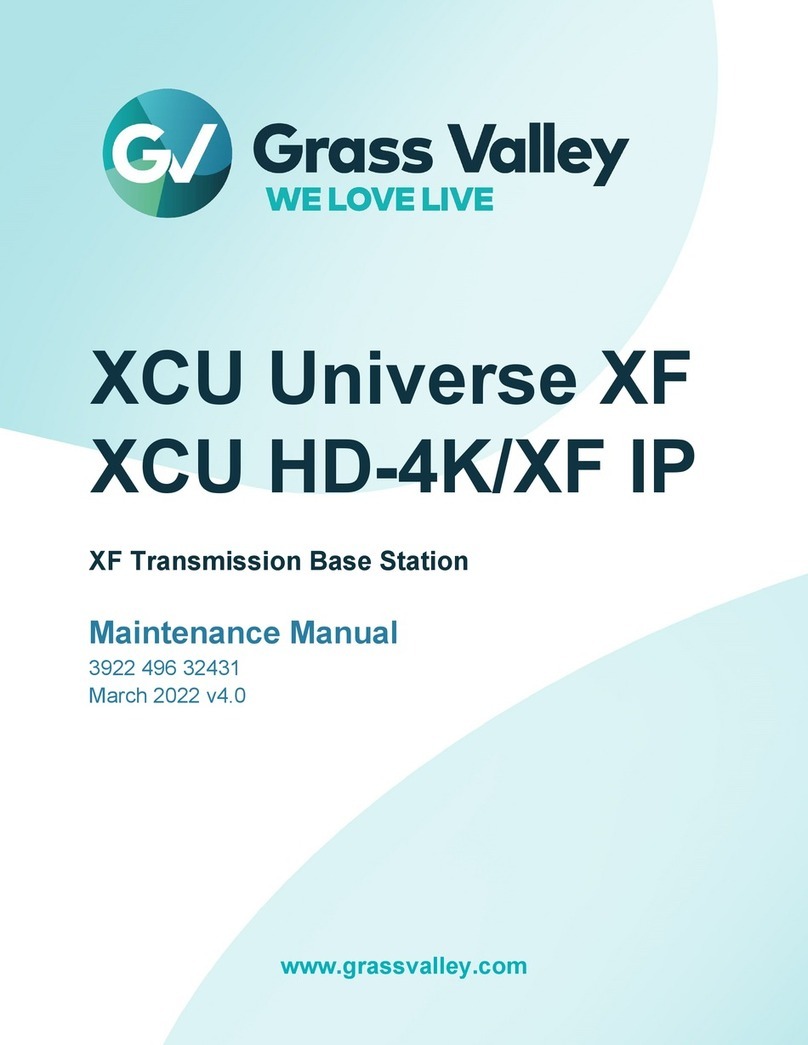
GRASS VALLEY
GRASS VALLEY XCU Universe XF Maintenance manual

EZ FX
EZ FX EZ Head RPT 25 Setup instructions
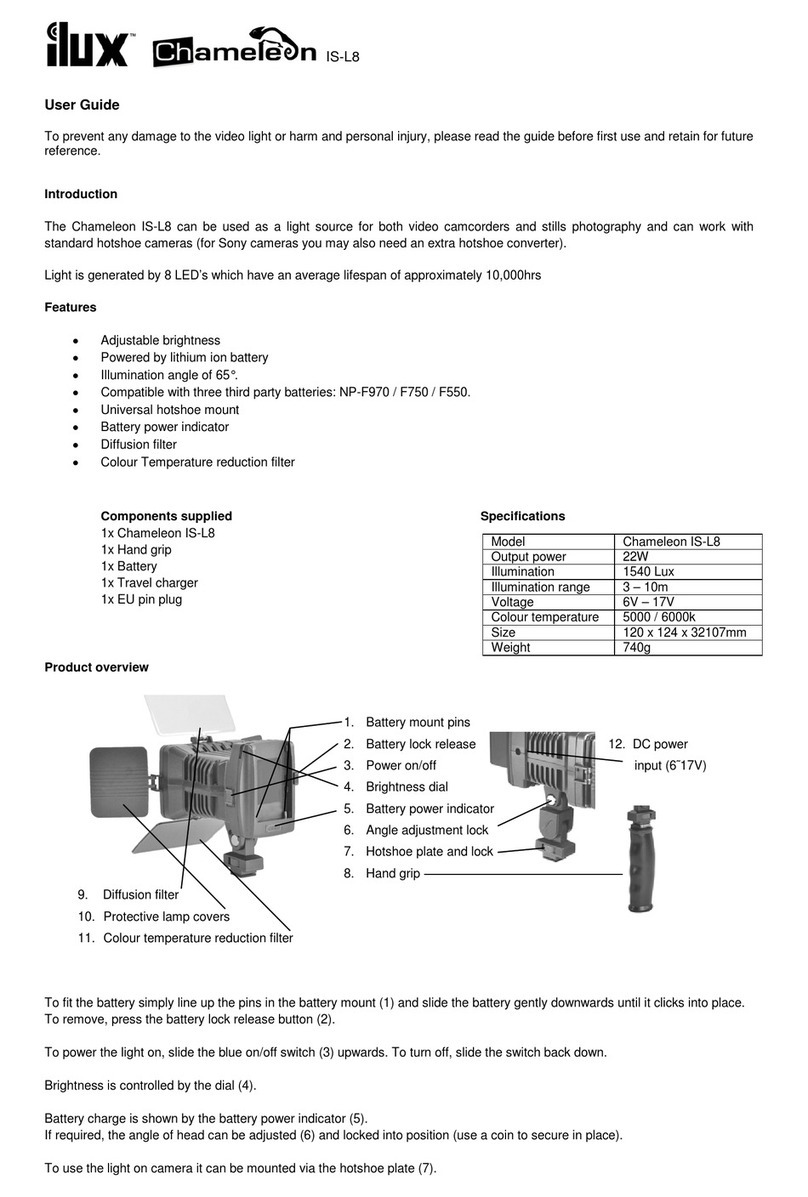
iLux
iLux Chameleon IS-L8 user guide
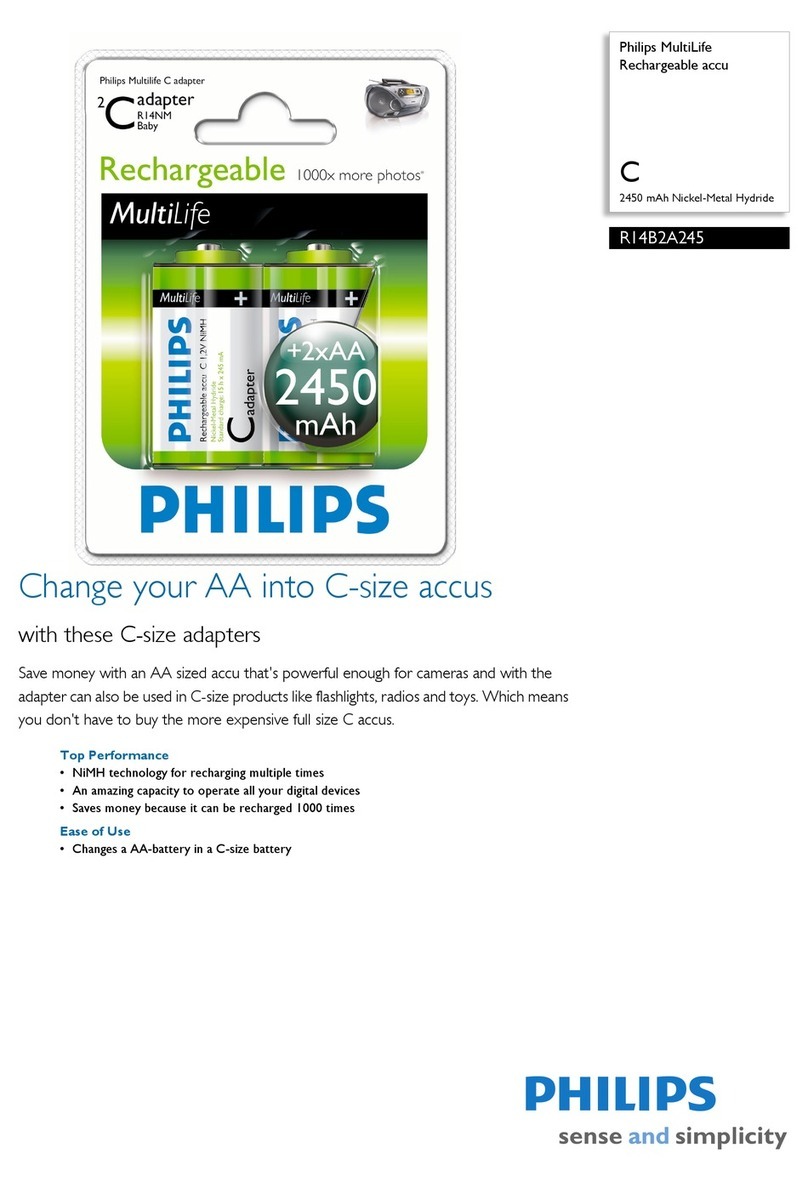
Philips
Philips R14B2A245/27 specification
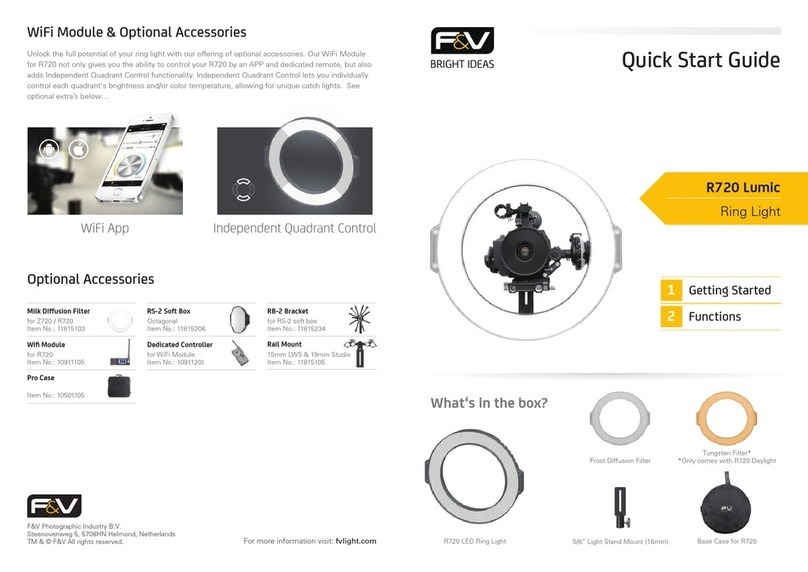
F&V
F&V R720 Lumic quick start guide
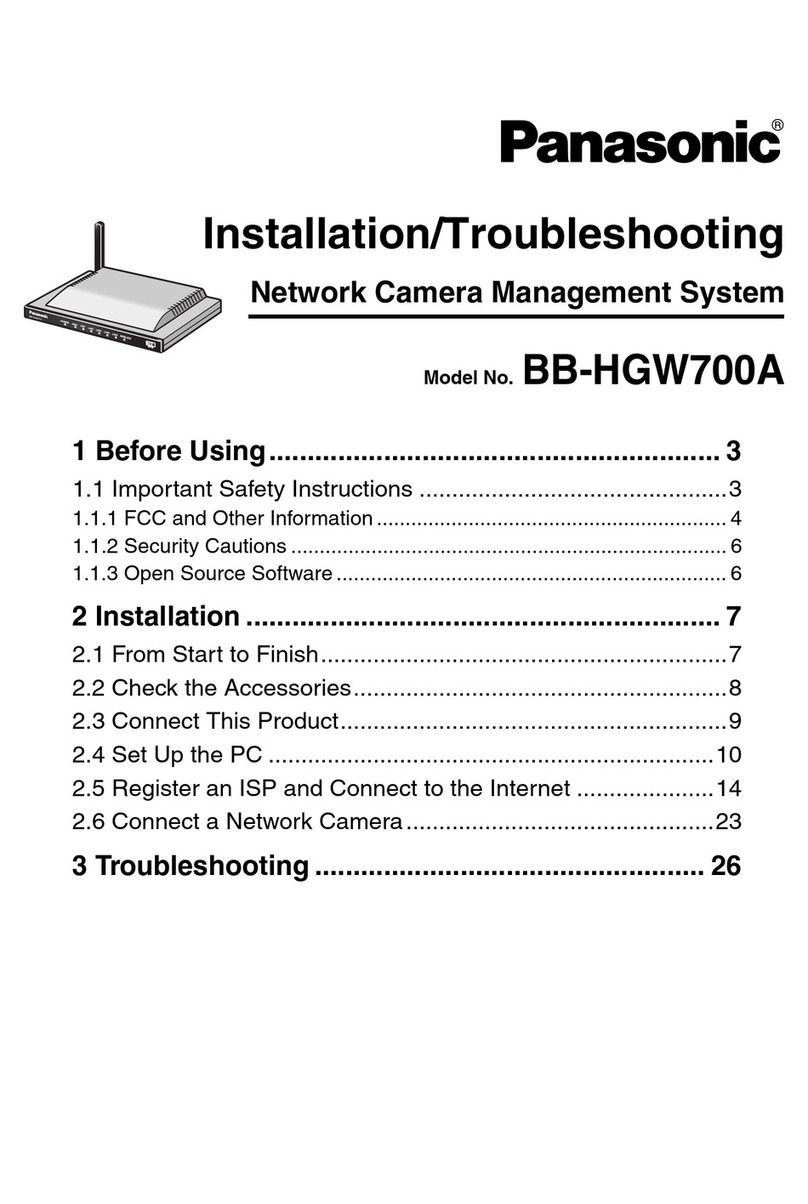
Panasonic
Panasonic BB-HGW700A - Network Camera Router Installation & troubleshooting guide
